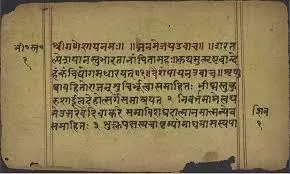
Sanskrit receives 17 times more central funding than other classical languages
text_fieldsBetween 2014-15 and 2024-25, the Indian government spent over ₹2,532 crore on promoting Sanskrit — an amount nearly 17 times greater than what was allocated for all other classical languages combined, according to data obtained through a Right to Information (RTI) request and official records.
A report in Hindustan Times said that during the same period, the five other classical languages — Tamil, Telugu, Kannada, Malayalam, and Odia — collectively received only ₹147.56 crore.
This breaks down to an average of ₹230.24 crore per year for Sanskrit, while the combined average annual funding for the other languages was just ₹13.41 crore.
Among the five, Tamil, which was granted classical language status in 2004, received the highest funding at ₹113.48 crore. Even so, that figure is 22 times lower than the amount spent on Sanskrit, which gained classical status a year later in 2005.
The remaining four classical languages, designated between 2008 and 2014, were allocated just ₹34.08 crore in total. Kannada and Telugu each received less than 0.5% of what was spent on Sanskrit, while Malayalam and Odia saw even smaller shares, under 0.2%.
Interestingly, the central spending on Sanskrit also exceeded that of several modern Indian languages that are not classified as classical. Hindi, Urdu, and Sindhi together received ₹1,317.96 crore — roughly 52% of the total funds allocated for Sanskrit. Urdu alone accounted for ₹837.94 crore, followed by Hindi at ₹426.99 crore, and Sindhi at ₹53.03 crore.
This disparity exists despite the fact that Sanskrit is spoken by a tiny fraction of the population, as per the 2011 Census. In comparison, the combined speakers of Tamil, Telugu, Kannada, Malayalam, and Odia represented nearly 22% of India’s population at the time. Hindi speakers made up 43.63%, and Urdu speakers 4.19%.
The imbalance in funding has sparked strong political responses.
In March, Tamil Nadu Chief Minister MK Stalin criticised the central government’s language priorities, stating, “...Rather than installing Sengol in Parliament, uninstall Hindi from Union Government offices in Tamil Nadu. Instead of hollow praise, make Tamil an official language on par with Hindi and allot more funds for Tamil than a dead language like Sanskrit.”












